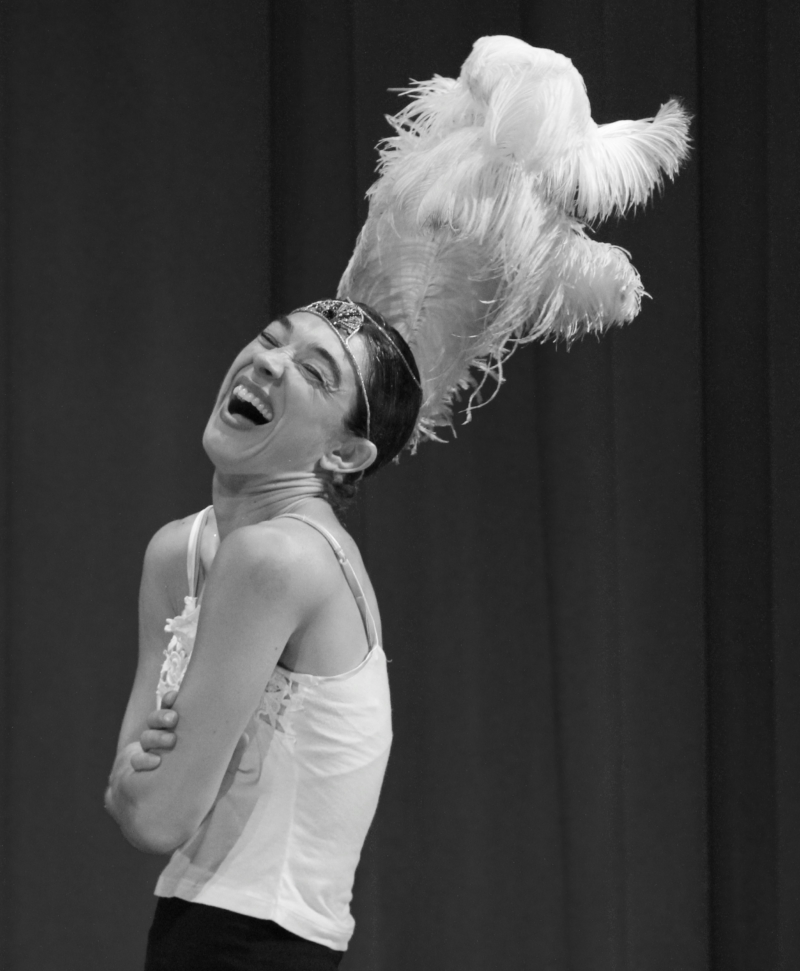What is the function of dance and what is its place in the world? Monica Bill Barnes answers these questions and more in her work, exploring and celebrating individuality, humor and the innate theatricality of everyday life.
Founder and artistic director of NYC-based Monica Bill Barnes & Company, and debuting a new world premiere work during our Summer Dance Series at Cain Park and the Heinz Poll Summer Dance Festival, we caught up the busy choreographer (her work has been performed in venues ranging from the Upright Citizen’s Brigade to Carnegie Hall and has been performed in more than 75 cities across the US) to talk about the creative process and her experience working with GroundWorks for the first time.
What is this piece inspired by? During rehearsal it felt as if the work told stories around sports (boxing, in particular) and what it means to train and be a champion. Are those some of the things you are exploring?
“I’m always striving to find something familiar and recognizable – to have an immediate sense of association and that the audience is not in this abstract world. Everything that you’re saying feels so right – in this piece we’re borrowing from the world of sports, which I think is way most Americans feel comfortable looking at movement. The work is asking the audience to engage with movements in the way that fans engage with a sporting event.”
You also mentioned how you were influenced by your dad (who was an avid runner) growing up. Tell us more about that.
“I grew up with my dad being such a physical presence. He ran marathons every other year. The fact that I thought it was even possible to make a living doing something physical says a lot. He taught me that being physical has a priority and is important in how you live. It affected me profoundly – just seeing what the human body is capable of. It’s pretty remarkable at a young age to be in touch with that. I also understood at a young age the toll it takes on your body.”
The work is set to a diversity of songs from swing and country to opera and ending with “Melt with You” by Modern English. What went into the song selection?
“It really feels so good and right to me that the music should be a surprise and feel familiar, too. Like maybe it’s a song or a piece you haven’t heard in a while. For me, music is the first step in bringing the audience into the experience. I’m very affected by music. It’s so important to me – that the music have the strong presence. It’s giving an emotional context; the dancing both with and against the music.
For instance, you hear Modern English and think, ‘Are they going to run the whole time?’ That whole section is so incredibly musical. The opera piece is Puccini’s Turandot. It’s one of those opera pieces not so famous yet familiar enough that you could sing along or think to yourself, ‘Hey, I feel like I’ve heard this before.’”
In your work there’s often this authentic connection between the performers and the audience. Tell us more about that.
“That’s so much of our job as performers. The audience is different each night and sometimes that means making small shifts in ways that we’re performing things. That connection relies on the audience being invested in the experience.”
Tell us about your experience working with GroundWorks.
“They were so wonderful in embracing the physicality of the piece. It’s a very demanding piece and requires a lot out of the dancers. And overall the company was so open hearted and interested in trying things that perhaps felt outside of their comfort zone. I thought it was such a pleasure to work with them.”
How would you describe the creative collaboration?
“The widely held belief about choreography is that it’s just a bunch of moves. I feel like the way a work is performed is so central as a work of art. I’m not asking the dancers to create movement but it’s about creating a structure and world for the performers to inhabit.”
At what point in your life did you fall in love with dance?
“Kind of immediately. It was a natural thing. I started dancing when I was seven. I saw a friend performing in a show and loved it. I thought, ‘I gotta do this! And then one thing led to another.”
Your works often explore humor and what’s funny. But you didn’t start your career setting out to make dance comedic. Can you tell us more about your artistic journey?
“I think I am, truthfully, after being in this field for so long (I do feel like I’ve been around a bit) – a sense of humor is essential. It represents the way that I feel about myself and life. Some people are choreographing the way they feel or perceive themselves. I perceive myself as somebody who is striving and keeps a really good sense of humor or keeps my sense of humor intact along the way. I value humor and resilience and grit and I wouldn’t have made it this far without those qualities. It shows up again and again in my life, and in my work.”
Ira Glass, host of NPR’s This American Life, with whom you collaborated for the storytelling revue Three Acts, Two Dancers, One Radio Show Host, described many of your pieces as “organized around real seeming moments of human awkwardness and false bravado and sheer joy.” Do you feel like this is an apt description of your work?
“Oh, I hope so. I would love it to be. That feels so incredibly complimentary. I always want to find joy in what we’re doing and I hope the audience feels that, too.”


